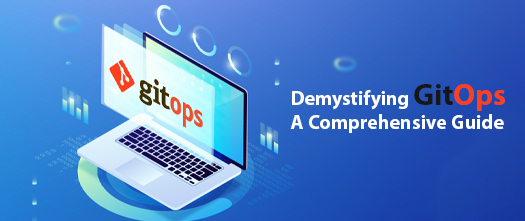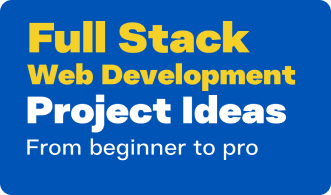Demystifying GitOps: A Comprehensive Guide
For all those who are new to the term GitOps, you have landed on the ideal page. In this blog below, we will dive into the details of what GitOps is, when and where it is used! Stay connected with us till the last section to demystify GitOps together!
To begin with, it is a modern software development method known to simplify the management process of infrastructure and applications. It’s all about using Git as the central control hub, ensuring your software behaves as intended.
GitOps is essential in today’s software landscape.
- It brings stability by maintaining the desired system state, even when issues arise. It accelerates development with rapid, secure deployments.
- It minimises risks by providing a clear history of changes.
- Plus, it fosters teamwork and communication among developers and operations teams.
This blog is your guide to GitOps, designed for students and newcomers. By the end, you’ll have a solid grasp of GitOps, understand its significance, and be well-equipped to dive into the world of efficient software development practices.
Understanding GitOps
Git refers to the VCS (version control system), which tracks the changes in files and folders. Although it is popular for software development, it can be used for other purposes like configuration files or versioning documentation.
Ops, on the other hand, refers to operations involved in the software development process, like managing and deploying infrastructure, responding to incidents, or monitoring applications.
GitOps is a modern software approach that uses Git for managing software and its infrastructure. Here are the simple steps demonstrating how it works!
- Declarative Control: You tell Git how you want your software and systems to be.
- Automatic Updates: GitOps constantly checks Git for changes and automatically applies them to the live system.
- Maintains Desired State: It ensures your systems stay the way you’ve defined in Git.
- Detailed Record: Every change is logged, so you know what happened, when, and why.
GitOps boosts reliability, speeds up changes, reduces errors, and promotes collaboration. It’s like a guardian for your software, making things smoother and more efficient.
Real-World Applications of GitOps –
- Google: They use GitOps to handle their massive infrastructure and roll out apps on a huge scale.
- Amazon: Amazon relies on GitOps to manage services like EC2 and EKS.
- Microsoft: GitOps helps manage Microsoft’s Azure services, like AKS and Azure App Service.
- Netflix: GitOps is their go-to for managing streaming infrastructure and adding new features.
- Spotify: Even Spotify uses GitOps for their music streaming and feature updates.
But it’s not just for the big guys. GitOps is also gaining ground with startups and smaller businesses. Here’s how it plays out:
- An e-commerce company keeps its Kubernetes cluster and feature releases running smoothly with GitOps. It ensures the cluster aligns with what’s defined in Git, making feature releases quick and reliable.
- A financial services firm relies on GitOps to maintain infrastructure and launch apps in production. It helps them meet strict regulations and keep their services available.
- A gaming company uses GitOps to run game servers seamlessly. They can deploy new game updates quickly without disrupting the player experience.
GitOps Principles
GitOps is a software development methodology that brings clarity and efficiency to the Kubernetes model operating and cloud-native application development process. Its core principles form the foundation of this approach, ensuring that your software and infrastructure management works always in the same defined state!
- Declarative Configuration:
GitOps simplifies infrastructure management by allowing you to declare exactly how your system should look. This declarative approach in Git means you define the desired state, and the GitOps controller keeps it that way. It’s like giving your system a set of instructions it always follows.
- Version Control:
Git becomes the central repository for all your application code and infrastructure configurations. This serves as the single source of truth. It’s like having a ledger for all changes, making it effortless to trace back or forward to previous versions when needed.
- Automation and Orchestration:
GitOps heavily relies on automation and orchestration. These mechanisms ensure your system consistently matches the desired state, even when faced with unexpected challenges. It’s like having a dedicated team that tirelessly maintains your system’s integrity, reducing the risk of errors and speeding up deployments.
- Continuous Integration and Continuous Delivery (CI/CD):
Often paired with GitOps, CI/CD automates the entire software development lifecycle. This accelerates and streamlines the process from writing code to deploying it, which ensures your software reaches production quickly and reliably.
These GitOps principles provide a robust, reliable, and efficient way to manage infrastructure and deploy applications, making software development smoother.
Standard CI/CD vs. GitOps
- Source of Truth: Standard CI/CD often relies on a build server as the reference point for the system’s desired state. In contrast, GitOps firmly places Git as the single source of truth. Your system’s ideal state is defined and tracked in Git repositories.
- Automation: GitOps embraces automation through a dedicated GitOps controller. This controller handles deployment and monitoring tasks seamlessly. Standard CI/CD, on the other hand, may or may not use automation, leaving more manual intervention as an option.
- Declarative vs. Imperative: GitOps follows a declarative approach to infrastructure automation. In this setup, you specify the system’s desired state in Git, and the GitOps controller ensures it stays that way. Standard CI/CD, however, typically relies on an imperative approach. You must provide detailed step-by-step instructions for deployment and management.
In essence, GitOps streamlines and simplifies by making Git the single source of truth and automating processes. Standard CI/CD may involve more manual control and imperative instructions.
Benefits of GitOps
GitOps brings a host of advantages to the table:
- Improved Reliability and Stability: GitOps ensures your system reliably matches its desired state. Even if problems crop up or the environment changes unexpectedly, GitOps keeps things steady.
- Increased Agility and Velocity: With GitOps, deploying new features and changes to your production environment becomes a breeze. Automation handles the heavy lifting, making it quick and dependable. Think of it as a speed boost for your development cycle.
- Reduced Risk of Errors and Downtime: GitOps maintains a clear record of every change made to your production environment. This makes identifying and fixing errors a piece of cake. Errors don’t stand a chance when GitOps is on your side.
- Enhanced Collaboration and Communication: GitOps centralises communication and collaboration for your development and operations teams. Everyone works from the same playbook, thanks to Git as the single source of truth. It’s like having a shared whiteboard for your whole team.
- Improved Compliance: GitOps simplifies compliance by meticulously tracking all changes to your production environment. Auditing becomes straightforward, helping you meet regulatory requirements effortlessly.
- Reduced Costs: GitOps can save money by automating deployment and monitoring. Fewer manual tasks mean fewer overheads and more efficient processes lead to cost savings.
- Enhanced Security: Your system’s security gets a boost with GitOps. Git is the guardian of your desired state, ensuring only authorised changes are made.
GitOps Roadmap
- Assessment and Learning: Evaluate your current processes and educate your team about GitOps. Identify areas that could benefit from GitOps.
- Set Clear Objectives: Define your goals for GitOps. Whether speeding up deployments, reducing errors, or improving collaboration, clear objectives guide your implementation.
- Tool Selection: Choose GitOps tools that fit your organisation’s needs. Popular choices include ArgoCD, Flux, and Jenkins X.
- Git Repository Setup: Create Git repositories as the source of truth for code and infrastructure configurations. Define your system’s desired state in these repositories.
- Deploy a GitOps Controller: Install a GitOps controller like ArgoCD. It watches your Git repositories for changes and automatically aligns your system with the desired state.
- Infrastructure as Code (IaC): Use Infrastructure as Code to define your infrastructure in version-controlled files. Tools like Terraform or AWS CloudFormation can help.
- Integrate CI/CD: Connect GitOps with your CI/CD pipeline. This ensures changes in code trigger the GitOps controller for automatic deployments.
- Testing and Validation: Implement automated tests to confirm changes match your desired system state.
- Continuous Monitoring: Set up ongoing monitoring to catch and address real-time issues.
- Rollback Procedures: Plan for rollback processes in case of deployment issues.
- Documentation and Training: Document your GitOps processes and train your team.
- Integrate CI/CD: Connect GitOps with your CI/CD pipeline. This ensures changes in code trigger the GitOps controller for automatic deployments.
- Testing and Validation: Implement automated tests to confirm changes match your desired system state.
- Continuous Monitoring: Set up ongoing monitoring to catch and address real-time issues.
- Rollback Procedures: Plan for rollback processes in case of deployment issues.
- Documentation and Training: Document your GitOps processes and train your team.
- Iterate and Improve: Continuously refine your GitOps workflows based on experience.
- Scale and Expand: As your organisation grows, consider extending GitOps to new projects and teams.
- Community and Knowledge Sharing: Engage with the GitOps community, attend events, and share knowledge.
Conclusion
In the rapidly scaling world of software development, GitOps emerges as a necessary tool for collaboration, efficiency and reliability. As we have scrolled down the details in this comprehensive guide, it is clear that GitOps is not just a trend but a transformative approach that streamlines the operations process and bridges the gap between operations and development teams. Its increasing use in businesses effectively reshapes the deployment, monitoring and management of the infrastructure and softwares.
For all planning to leverage the benefits of increasing GitOps scope, Grras Solutions stands out as your premier destination. With a proven track record in IT training and certification, the IT institutes in Jaipur, Delhi, Ahmedabad, Nasik and Nagpur offer comprehensive GitOps training with practical experience on real-world projects to meet the needs of both beginners and seasoned professionals.
One can join the professional training course in DevOps to get pratical experience over cloud computing, DevOps, GitOps,etc.
Connect with the expert IT industry professional at Grras Solutions today to embark on a transformative journey towards operational excellence with GitOps.






